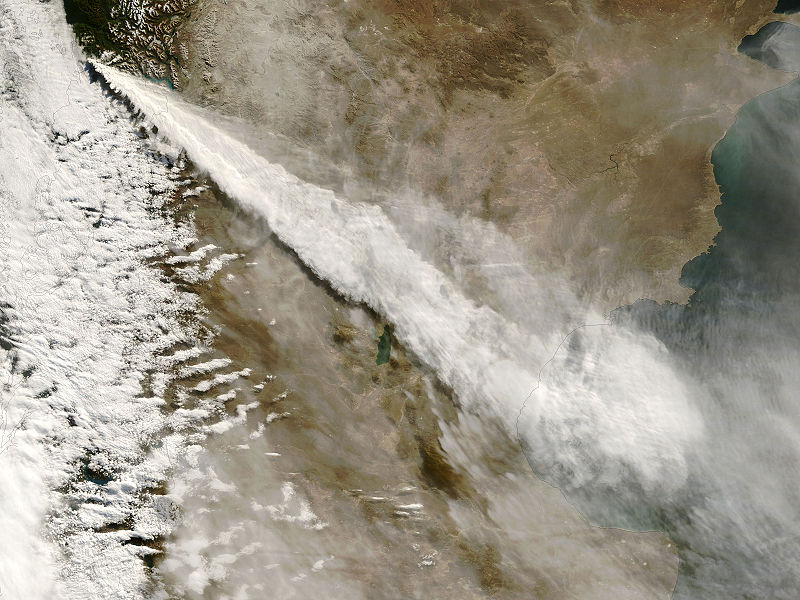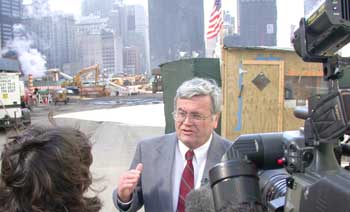|
the USGS Mt. St. Helens site
|
|
|
|
|
Figure 22. Mt. St. Helens, 5/19/80, source
Day after the May 18, 1980 eruption of Mount St. Helens.
USGS Photograph taken on May 19, 1980, by Peter Lipman.
|
Figure 23. Mt. St. Helens, 5/19/80,source
Day after the May 18, 1980 eruption of Mount St. Helens. View of denuded slope and blowdown timber, with a still steaming Mount St. Helens in the background. USGS Photograph taken on May 19, 1980, by Peter Lipman. |
Figure 24. Particle of volcanic ash from Mount St. Helens, source
|
|
|
|
Others
|
|
|
 |
|
Figure 25. Mt. Cleveland, source
Ash plume from Cleveland (May 23, 2006), photographed by Jeffrey Williams onboard the International Space Station. Williams was first to notice the eruption, even before the Alaska Volcano Observatory. |
Figure 26. Chaiten volcano,2008, Chile, source
Ash cloud from the 2008 eruption of Chaitén volcano stretching across Patagonia from the Pacific to the Atlantic Ocean |
Figure 27. (9/12/01) Source: space imaging
This is a satellite image captured on 9/12/01. It appears that the cloud emerging from the WTC site stays together until it reaches a particular altitude where it begins to just disperse. There appears to be a kink in the cloud trail where this occurs.
|
|
|
|
|
|
Figure 28. Influence of the Kuwait oil fires plume (1991) on the microphysical development of clouds, Yinon Rudich, JOURNAL OF GEOPHYSICAL RESEARCH, VOL. 108, NO. D15, 4478, doi:10.1029/2003JD003472, 2003 Link to Journal of Geophysical Research
(Reference provided by "who" and is greatly appreciated.) (1991) Source |
Figure 29. California wild fires
(8/07) Source: |
Figure 30. (9/11/01) Source: |
|
|
|
|
|
Figure 31. (9/11/01 entered) Source
|
Figure 32. Mt. St. Helens, 5/19/80, source
Day after the May 18, 1980 eruption of Mount St. Helens.
USGS Photograph taken on May 19, 1980, by Peter Lipman.
|
Figure 33. (9/11/01) Source: |
|
 |
|
|
|
Figure 34. At Ground Zero in New York City, UC Davis Professor Emeritus Thomas Cahill describes his air-quality findings to reporters on Feb. 23, 2002, just before testifying at an EPA investigative hearing in Manhattan. (Sylvia Wright/UC Davis News Service file photo)
(2/23/02) Source: (study)(archived) |
Figure 35. Source:
|
Figure 36a and 36b. For the WTC samples, particle sizes below the (.09 to .24 micron) size range were not analyzes. But, as can be seen by the trend, the smaller the particle size, the more there was of it. Typically, the smaller the particle size, the less there is of it.
Source: (original) |
|
|
|
|
|
|
Figure 37. Particle of volcanic ash from Mount St. Helens, source
|
|
|
Figure 40. A view west along Vesey Street. We didn't see or hear of any streets filled with burned bodies. So, I don't believe that cloud is hot. (9/11/01) Source
|
|
|

